Zach Dechant Blog

Top 10 Takeaways From my Internship Experience at TCU
Navigating the internship process can be a difficult task for any young coach. The idea of moving halfway across the country to volunteer your time with the hope that it leads to your dream job can be a little stressful to say the least. This is why it’s extremely important to do your research on what internship programs are worth pursuing.
If you pursue a program solely for the prestigious logo on your resume, you might be in it for the wrong reasons. I have heard stories of people chasing big time internship programs be disappointed that their role was to fill water bottles, set up equipment, and spot people. While you might have developed into a First Team All-American Bench Press Spotter, the experience would have done nothing to prepare you to lead athletes.
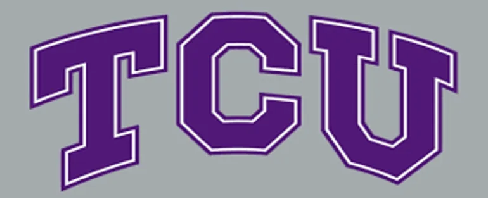
When selecting an internship program, doing extensive research on what program you are considering is vital. If the sole reason to complete an internship is to satisfy a graduation requirement, you might be in it for the wrong reasons. Although some people will get by with this approach, I wanted to take a different approach. Let me provide a little background on myself that will help shape the picture on why I chose TCU as my internship destination.
I grew up playing sports my entire life and ultimately played baseball in college. Because of this, I already knew that the internship program I wanted to pursue had to be with someone who was well versed in the world of baseball.
During my college days I had some lingering hamstring issues, which lasted from junior college all the way through my senior year. I have seen Coach Dechant talk about supramaximal eccentrics and sprint training for mitigating hamstring injuries in both podcasts and Instagram posts. This furthered my interest in the internship program because I knew this was something we would cover in the education curriculum. Also, it directly coincided with an issue I was never able to solve in college.
Before arriving at TCU, I worked as a personal trainer at a local gym. My groups never had more than 9 people so I did not have any experience leading large groups. I had heard Coach Dechant speak about how he manages 40+ athletes in the weight room at one time. Since I had no previous experience of managing large groups, I knew I would derive great value from observing how a great program navigates this.
Lastly, I wanted a place where I was confident that I would be challenged to grow and develop every day. I wanted to be an active part of the process, not just a bystander that set equipment up and filled up water bottles. I had seen Coach Dechant talk about building the next generation of coaches. This involved running warm-ups and foundation program lifts, undergoing an internship education curriculum, and giving presentations in front of colleagues. This excited me because I knew I would be thrown into the fire and be forced to adapt and grow.
There is nothing on this list about pursuing a prestigious logo. My weaknesses and interests appeared to align with the principles embedded in this internship. Education and development were the primary drivers of my decision. My goal was to find a program that suited my interest and that I genuinely wanted to be a part of. TCU seemed like the right fit, so I reached out to Coach Dechant and was fortunate to get hired on for the fall semester. The internship just finished this past week, and I have absorbed a ton of great information that I want to share with those who have not been behind the scenes in this program.
Here is a list of the Top 10 takeaways from my time at TCU:
1. You Can Always Pull Back the Reins
Athletes must be held to a high standard on day 1. Being loose with them during the first week is a bad idea. If athletes are given the chance to slack off they will take advantage of that more times than not. Demanding a high degree of discipline, excellence, and attention to detail on day 1 will lay the groundwork to build upon as the weeks progress. This does not imply drilling them like Navy Seals on the first Monday morning lift when they get on campus. It simply means athletes should be expected to execute at a high level so that the stage is set for the rest of the offseason. If the disciplinary standard is absent from the get-go, good luck getting it back. Demand it on day 1 and keep it!

2. Incorporate Testing Into Training
This one was very eye opening to me. I knew testing was important, but the level of testing and the extent in which the numbers were being evaluated made me realize how critical it was. We tested 10yd accelerations, fly 10’s, front squat RPE’s, bench press RPE’s, vertical jumps, med ball throws, and force plate jumps on a weekly basis. This might sound like an exhaustive process, but each of these tests were done as a normal part of the training process. There was never a test day dedicated to gathering data. It was all incorporated strategically into the training plan so that training itself would take care of the testing. You don’t need test days if you are monitoring progress all the time. Also, when you give athletes quantitative feedback on what they are doing, it drives great intent to beat their previous numbers. This leads me to my next point.
3. Intent is the X Factor
The athletes I oversaw very rarely (if ever) hit a load that was 90-95% of their 1RM. This means that nearly all training was done at submaximal intensities. To drive adaptation, there must be a high level of intent on all lifts. Hitting an 80% trap bar deadlift with submaximal intent won’t get the job done. Our job as coaches was to make sure these lazy reps didn’t take place. When guys jumped, they did so with maximal intent. When they lifted heavy weight, they did so with maximal intent. It was evident that when we took quantitative measures of bar speeds and med ball throws, guys got competitive and intent went through the roof. Give athletes an opportunity to compete in the weight room and the intent will take care of itself!
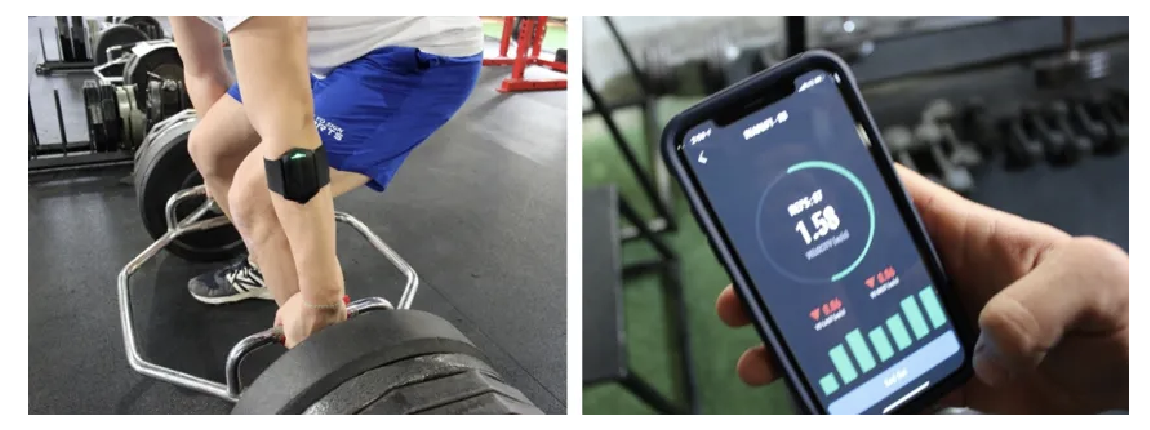
4. Weights are the Easy Part
When we are in our undergrad classes and completing our certifications, all we learn about are the perfect set and rep schemes and where they should be put in the training calendar. While this stuff has some value, it doesn’t provide an accurate representation of all the stresses athletes face on a regular basis. While the program might call for a high CNS intensive day, athletes might show up that day super sluggish or stressed out. You never know when one of them might fail a math test, break up with a girlfriend, or get drilled in the foot by a 95mph heater. One of my jobs was to take daily readiness scores to get a good idea of how everyone was feeling and would report these to Coach Dechant. If the numbers were alarming, he would adjust the workout as needed. There were a few times he would cut a few sets on sprint work, reduce the intensity on fly’s or cut sprints out altogether. Being able to adjust training in response to on-field workloads is one of the most valuable skills a coach can bring to the program.
5. Chase the Adaptation
One idea that was constantly preached throughout the internship was that many roads lead to Rome. Not a single coach in the country has the same program, but they are chasing similar adaptations. Everyone wants their athletes to jump higher, run faster, reduce the likelihood of injury, and perform at their best. Training is simply a means to an end. Are the athletes in front of you getting the adaptation they need? If the answer is yes, we should applaud that method and not demonize a program because it is different than ours. Instead, we should strive to learn from those with alternative ideas and constantly challenge our own methods so that we are constantly improving our craft.
6. Reverse Engineering the Sport Will Give You All the Clues you Need
Simply watching a sport will provide valuable insight on what demands athletes need to be prepared for. How often do they jump, accelerate, change directions, throw, hit max sprint velocity? How many of these are at maximal intensity? How many are at submaximal intensity? What joint positions do they get into on the field? The answer to these questions is the outline for the program. Although GPS data would be the ideal strategy here, simply watching a game with a notepad and a stopwatch can unveil a lot of information too!
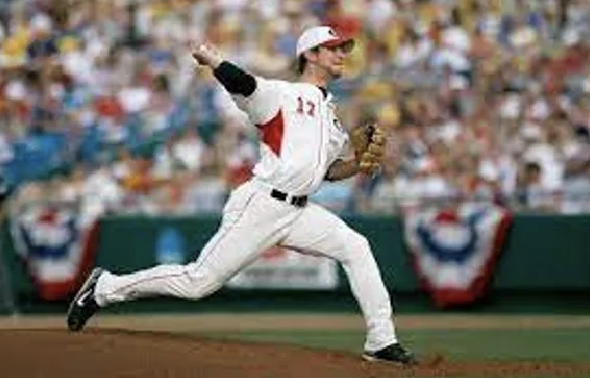
7. If it Ain’t Broke Don’t Fix It
One of my primary jobs during the internship was to run the foundation program lifts with the position players. The set and rep scheme stayed nearly the same for compound lifts the entire semester. Our Tuesday lift consisted of 3-5 sets of 5 reps with an RPE between 6-8 for 15 straight weeks for bench press and front squat. Take a glance at the chart below. The foundation guys were not loading maximally or going to failure because they sat in the 6-8 RPE range. It was simply auto-regulated submaximal loading that was done with maximal intent. Like stated above, intent is the X Factor! Our guys would have an RPE of 7 on a front squat and move the weight like it was a 1RM. The effectiveness of this cannot be understated. Power outputs, velocities, and strength kept going up so there was no reason to change it. If something is clearly working in the program use it until its effectiveness begins to diminish.
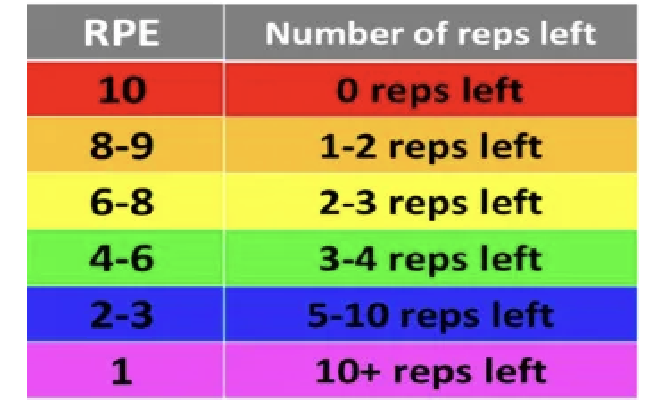
8. Be Adaptable/Quick on Your Feet
There were times that I was handed a new warmup/lift sheet 5 minutes before the lift started with no direction other than “don’t mess this up”. There will be things that happen every day that are completely unexpected. A great coach is a great problem solver. Being versatile and solving problems in a quick, efficient manner will set you apart from your competition.
9. Learn to be Transparent with Those Around You
An effective program doesn’t exist if those involved are not on the same page. If something does not go as planned or if someone is making costly mistakes, those issues need to be addressed and fixed. During staff meetings, we would have extensive conversations on what we did well and what we needed to improve on. Being told you aren’t good at something is never fun, but welcoming constructive criticism is incredibly important in improving your craft. This made all of us constant observers of one another and we were constantly communicating what went well and what still needed work. Receiving regular constructive criticism ultimately improved the relationships we had with one another. No one took offense to anything as we all knew we were there to help each other and grow.
10. Understand When to Use Different Coaching Voices
This is one that I never really gave much thought before interning at TCU. In week 2, I got to run my first warm up and thought it went well. We had our post-lift debrief and one of the interns told me that my voice was not nearly as effective as it could have been. I had kept my voice at nearly the same volume and there was not very much change in my voice throughout the session. This is something I never thought about before, so I began to observe how other coaches manipulated their voices. Coach Dechant is a master at this. He knew when to be loud, softspoken, talk faster, talk slower, when to crack a joke, when to get under guys’ skin to motivate them, and always had a great feel for the room. I am grateful one of the other interns noticed my flaw and called me out on it. Otherwise, I probably would have looked like the guy in the picture below all semester long.
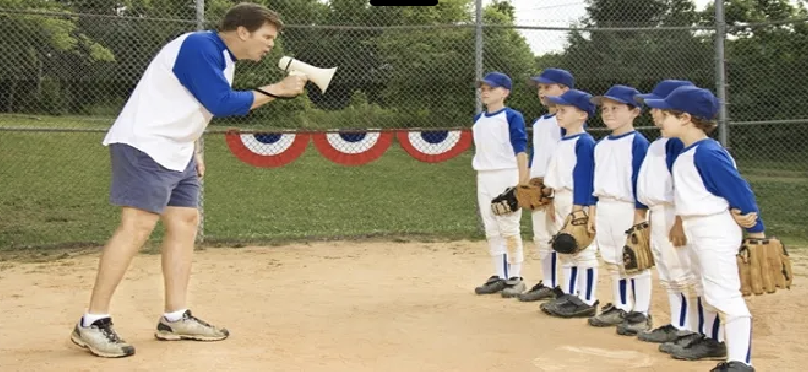
Hopefully this paints a vivid picture of not only what to expect from this internship, but what concepts can be applied to your own situation to better yourself as a coach. As coaches, we should all be striving to get better. The intention of this article was to express my thoughts and observations of my time at TCU, hoping that those reading it can derive benefit and apply it to their life. These lessons have shaped me into a better coach than when I arrived in Fort Worth, and I hope that you can take something from this and better your career as well.
Shoutout to all the coaches and athletes who made this a very impactful experience for me. I appreciate you all!
GO FROGS!
Tommy is a former intern at TCU from the fall 2021 class. Prior to interning at TCU, Tommy interned at Northern Illinois University and worked as a personal trainer at Evolve Fitness and Training in Dekalb, Illinois. Before starting his career as a Performance Coach, Tommy played baseball at Bellevue University. In 2019 he was an outfielder on a 5th place finishing team at the NAIA World Series. His plan moving forward is to start his own independent training business and offer in-person and online coaching to both athletes and the general population.
Twitter – @tommy_hansen88
Instagram – tommy.hansen88
Youtube – Tommy Hansen
Free Pitcher's Training eBook Reveals
How To Develop Athletic Pitchers And Train Them With An
Emphasis On Speed, Power & Movement
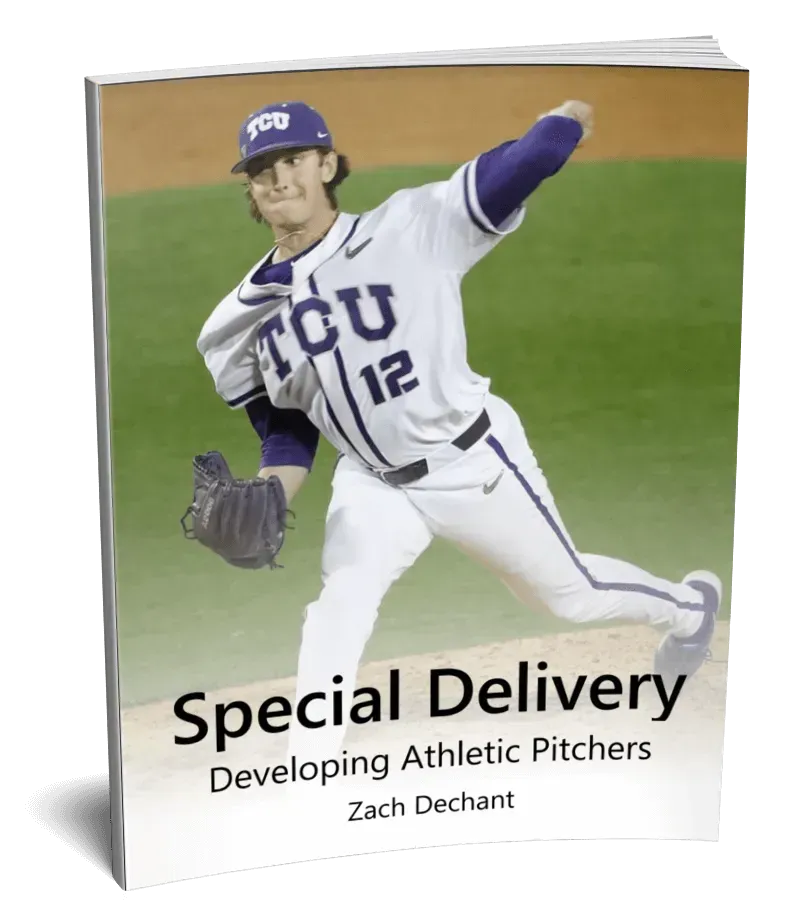
...and they must be treated as such. The act of pitching is an explosive, total-body movement.
There is nothing slow about it. Thus, our
overarching goal in training pitchers is to make
them fast, powerful, and explosive -- so that's how
they should train.
However, several factors separate pitchers from the rest of the team and these should be taken into account when developing a training program.
In this PDF eBook, you're getting the complete, individualized strength & conditioning approach utilized to assess, develop and train athletic pitchers that move explosively.
Movement Over Maxes
Developing The Foundation for Baseball Performance
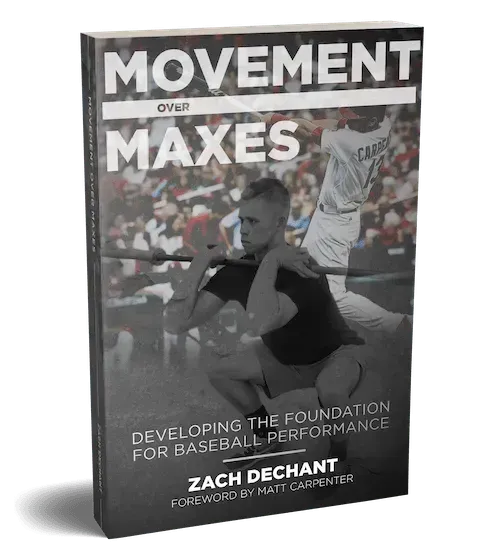
"If you want to improve your program and give your athletes a winning edge, this book is a must!"
Movement Over Maxes is a Foundational Program that serves as the starting point for any athlete. It functions as a guide for all coaches to begin to understand and implement basic movement patterns with a long-term development approach.
This was created for the coach who wears every hat for their program... The coach who mows the grass, drags the infield, handles the equipment, AND trains the athletes! This is for the coach who devotes their life to not only creating better baseball players, but growing boys into men through the sport.

Top 10 Takeaways From my Internship Experience at TCU
Navigating the internship process can be a difficult task for any young coach. The idea of moving halfway across the country to volunteer your time with the hope that it leads to your dream job can be a little stressful to say the least. This is why it’s extremely important to do your research on what internship programs are worth pursuing.
If you pursue a program solely for the prestigious logo on your resume, you might be in it for the wrong reasons. I have heard stories of people chasing big time internship programs be disappointed that their role was to fill water bottles, set up equipment, and spot people. While you might have developed into a First Team All-American Bench Press Spotter, the experience would have done nothing to prepare you to lead athletes.

When selecting an internship program, doing extensive research on what program you are considering is vital. If the sole reason to complete an internship is to satisfy a graduation requirement, you might be in it for the wrong reasons. Although some people will get by with this approach, I wanted to take a different approach. Let me provide a little background on myself that will help shape the picture on why I chose TCU as my internship destination.
I grew up playing sports my entire life and ultimately played baseball in college. Because of this, I already knew that the internship program I wanted to pursue had to be with someone who was well versed in the world of baseball.
During my college days I had some lingering hamstring issues, which lasted from junior college all the way through my senior year. I have seen Coach Dechant talk about supramaximal eccentrics and sprint training for mitigating hamstring injuries in both podcasts and Instagram posts. This furthered my interest in the internship program because I knew this was something we would cover in the education curriculum. Also, it directly coincided with an issue I was never able to solve in college.
Before arriving at TCU, I worked as a personal trainer at a local gym. My groups never had more than 9 people so I did not have any experience leading large groups. I had heard Coach Dechant speak about how he manages 40+ athletes in the weight room at one time. Since I had no previous experience of managing large groups, I knew I would derive great value from observing how a great program navigates this.
Lastly, I wanted a place where I was confident that I would be challenged to grow and develop every day. I wanted to be an active part of the process, not just a bystander that set equipment up and filled up water bottles. I had seen Coach Dechant talk about building the next generation of coaches. This involved running warm-ups and foundation program lifts, undergoing an internship education curriculum, and giving presentations in front of colleagues. This excited me because I knew I would be thrown into the fire and be forced to adapt and grow.
There is nothing on this list about pursuing a prestigious logo. My weaknesses and interests appeared to align with the principles embedded in this internship. Education and development were the primary drivers of my decision. My goal was to find a program that suited my interest and that I genuinely wanted to be a part of. TCU seemed like the right fit, so I reached out to Coach Dechant and was fortunate to get hired on for the fall semester. The internship just finished this past week, and I have absorbed a ton of great information that I want to share with those who have not been behind the scenes in this program.
Here is a list of the Top 10 takeaways from my time at TCU:
1. You Can Always Pull Back the Reins
Athletes must be held to a high standard on day 1. Being loose with them during the first week is a bad idea. If athletes are given the chance to slack off they will take advantage of that more times than not. Demanding a high degree of discipline, excellence, and attention to detail on day 1 will lay the groundwork to build upon as the weeks progress. This does not imply drilling them like Navy Seals on the first Monday morning lift when they get on campus. It simply means athletes should be expected to execute at a high level so that the stage is set for the rest of the offseason. If the disciplinary standard is absent from the get-go, good luck getting it back. Demand it on day 1 and keep it!

2. Incorporate Testing Into Training
This one was very eye opening to me. I knew testing was important, but the level of testing and the extent in which the numbers were being evaluated made me realize how critical it was. We tested 10yd accelerations, fly 10’s, front squat RPE’s, bench press RPE’s, vertical jumps, med ball throws, and force plate jumps on a weekly basis. This might sound like an exhaustive process, but each of these tests were done as a normal part of the training process. There was never a test day dedicated to gathering data. It was all incorporated strategically into the training plan so that training itself would take care of the testing. You don’t need test days if you are monitoring progress all the time. Also, when you give athletes quantitative feedback on what they are doing, it drives great intent to beat their previous numbers. This leads me to my next point.
3. Intent is the X Factor
The athletes I oversaw very rarely (if ever) hit a load that was 90-95% of their 1RM. This means that nearly all training was done at submaximal intensities. To drive adaptation, there must be a high level of intent on all lifts. Hitting an 80% trap bar deadlift with submaximal intent won’t get the job done. Our job as coaches was to make sure these lazy reps didn’t take place. When guys jumped, they did so with maximal intent. When they lifted heavy weight, they did so with maximal intent. It was evident that when we took quantitative measures of bar speeds and med ball throws, guys got competitive and intent went through the roof. Give athletes an opportunity to compete in the weight room and the intent will take care of itself!

4. Weights are the Easy Part
When we are in our undergrad classes and completing our certifications, all we learn about are the perfect set and rep schemes and where they should be put in the training calendar. While this stuff has some value, it doesn’t provide an accurate representation of all the stresses athletes face on a regular basis. While the program might call for a high CNS intensive day, athletes might show up that day super sluggish or stressed out. You never know when one of them might fail a math test, break up with a girlfriend, or get drilled in the foot by a 95mph heater. One of my jobs was to take daily readiness scores to get a good idea of how everyone was feeling and would report these to Coach Dechant. If the numbers were alarming, he would adjust the workout as needed. There were a few times he would cut a few sets on sprint work, reduce the intensity on fly’s or cut sprints out altogether. Being able to adjust training in response to on-field workloads is one of the most valuable skills a coach can bring to the program.
5. Chase the Adaptation
One idea that was constantly preached throughout the internship was that many roads lead to Rome. Not a single coach in the country has the same program, but they are chasing similar adaptations. Everyone wants their athletes to jump higher, run faster, reduce the likelihood of injury, and perform at their best. Training is simply a means to an end. Are the athletes in front of you getting the adaptation they need? If the answer is yes, we should applaud that method and not demonize a program because it is different than ours. Instead, we should strive to learn from those with alternative ideas and constantly challenge our own methods so that we are constantly improving our craft.
6. Reverse Engineering the Sport Will Give You All the Clues you Need
Simply watching a sport will provide valuable insight on what demands athletes need to be prepared for. How often do they jump, accelerate, change directions, throw, hit max sprint velocity? How many of these are at maximal intensity? How many are at submaximal intensity? What joint positions do they get into on the field? The answer to these questions is the outline for the program. Although GPS data would be the ideal strategy here, simply watching a game with a notepad and a stopwatch can unveil a lot of information too!

7. If it Ain’t Broke Don’t Fix It
One of my primary jobs during the internship was to run the foundation program lifts with the position players. The set and rep scheme stayed nearly the same for compound lifts the entire semester. Our Tuesday lift consisted of 3-5 sets of 5 reps with an RPE between 6-8 for 15 straight weeks for bench press and front squat. Take a glance at the chart below. The foundation guys were not loading maximally or going to failure because they sat in the 6-8 RPE range. It was simply auto-regulated submaximal loading that was done with maximal intent. Like stated above, intent is the X Factor! Our guys would have an RPE of 7 on a front squat and move the weight like it was a 1RM. The effectiveness of this cannot be understated. Power outputs, velocities, and strength kept going up so there was no reason to change it. If something is clearly working in the program use it until its effectiveness begins to diminish.

8. Be Adaptable/Quick on Your Feet
There were times that I was handed a new warmup/lift sheet 5 minutes before the lift started with no direction other than “don’t mess this up”. There will be things that happen every day that are completely unexpected. A great coach is a great problem solver. Being versatile and solving problems in a quick, efficient manner will set you apart from your competition.
9. Learn to be Transparent with Those Around You
An effective program doesn’t exist if those involved are not on the same page. If something does not go as planned or if someone is making costly mistakes, those issues need to be addressed and fixed. During staff meetings, we would have extensive conversations on what we did well and what we needed to improve on. Being told you aren’t good at something is never fun, but welcoming constructive criticism is incredibly important in improving your craft. This made all of us constant observers of one another and we were constantly communicating what went well and what still needed work. Receiving regular constructive criticism ultimately improved the relationships we had with one another. No one took offense to anything as we all knew we were there to help each other and grow.
10. Understand When to Use Different Coaching Voices
This is one that I never really gave much thought before interning at TCU. In week 2, I got to run my first warm up and thought it went well. We had our post-lift debrief and one of the interns told me that my voice was not nearly as effective as it could have been. I had kept my voice at nearly the same volume and there was not very much change in my voice throughout the session. This is something I never thought about before, so I began to observe how other coaches manipulated their voices. Coach Dechant is a master at this. He knew when to be loud, softspoken, talk faster, talk slower, when to crack a joke, when to get under guys’ skin to motivate them, and always had a great feel for the room. I am grateful one of the other interns noticed my flaw and called me out on it. Otherwise, I probably would have looked like the guy in the picture below all semester long.

Hopefully this paints a vivid picture of not only what to expect from this internship, but what concepts can be applied to your own situation to better yourself as a coach. As coaches, we should all be striving to get better. The intention of this article was to express my thoughts and observations of my time at TCU, hoping that those reading it can derive benefit and apply it to their life. These lessons have shaped me into a better coach than when I arrived in Fort Worth, and I hope that you can take something from this and better your career as well.
Shoutout to all the coaches and athletes who made this a very impactful experience for me. I appreciate you all!
GO FROGS!
Tommy is a former intern at TCU from the fall 2021 class. Prior to interning at TCU, Tommy interned at Northern Illinois University and worked as a personal trainer at Evolve Fitness and Training in Dekalb, Illinois. Before starting his career as a Performance Coach, Tommy played baseball at Bellevue University. In 2019 he was an outfielder on a 5th place finishing team at the NAIA World Series. His plan moving forward is to start his own independent training business and offer in-person and online coaching to both athletes and the general population.
Twitter – @tommy_hansen88
Instagram – tommy.hansen88
Youtube – Tommy Hansen
CONNECT WITH ZACH ON TWITTER
ABOUT ZACH DECHANT
Zach has been in place since 2008 at TCU and is the current Assistant Athletic Director of Human Performance. He oversees the development of Baseball. Alongside those priorities he also handles the development and implementation of the TCU Sports Performance Internship Program that has been in place for over 15 years. Over that time the internship program has encompassed 40+ semesters and 250+ intern coaches that have moved on to all levels of professional, collegiate, high school, and private strength and conditioning.
During baseball off-seasons, Coach Dechant trains a group of 30+ current MLB / MiLB Frogs. The pro Frogs spend 4 months back on campus training for the upcoming season...
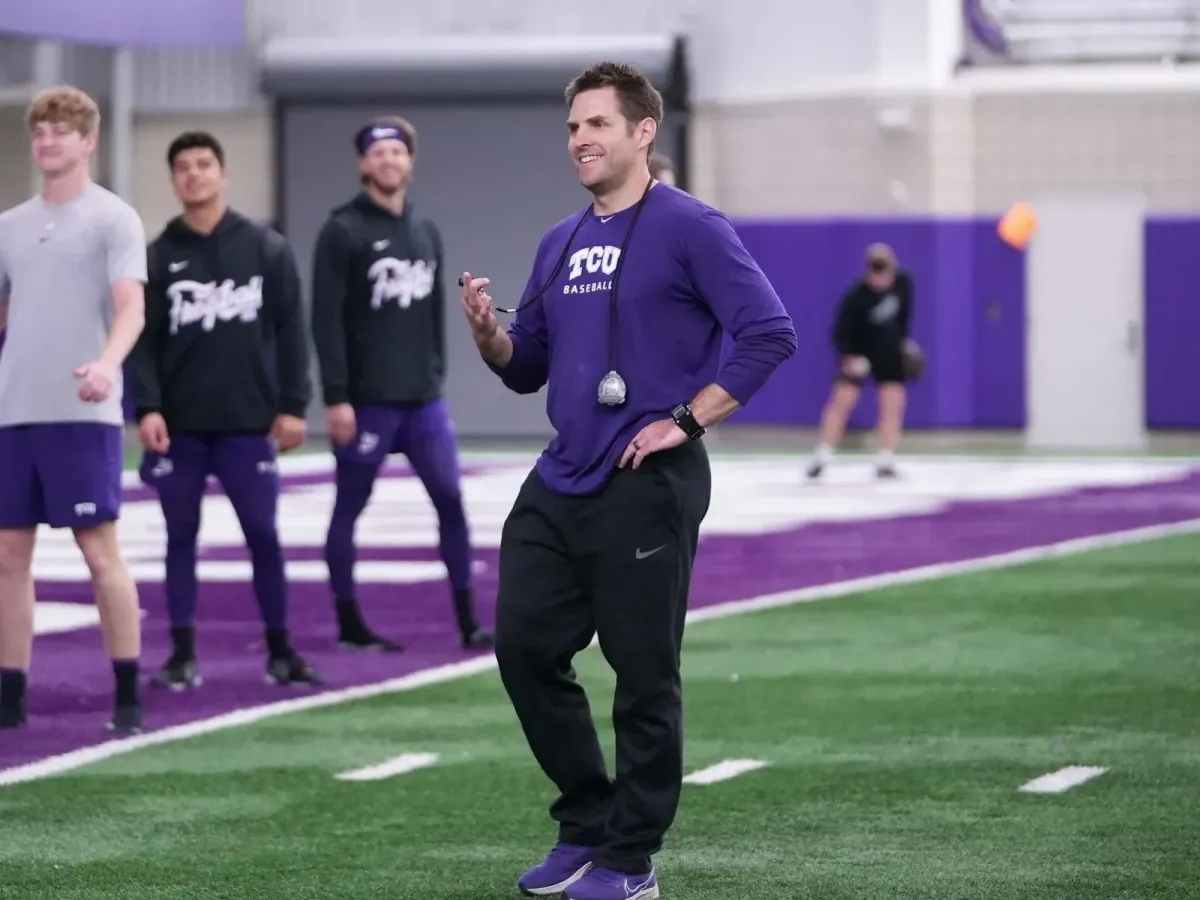

©️ 2024
